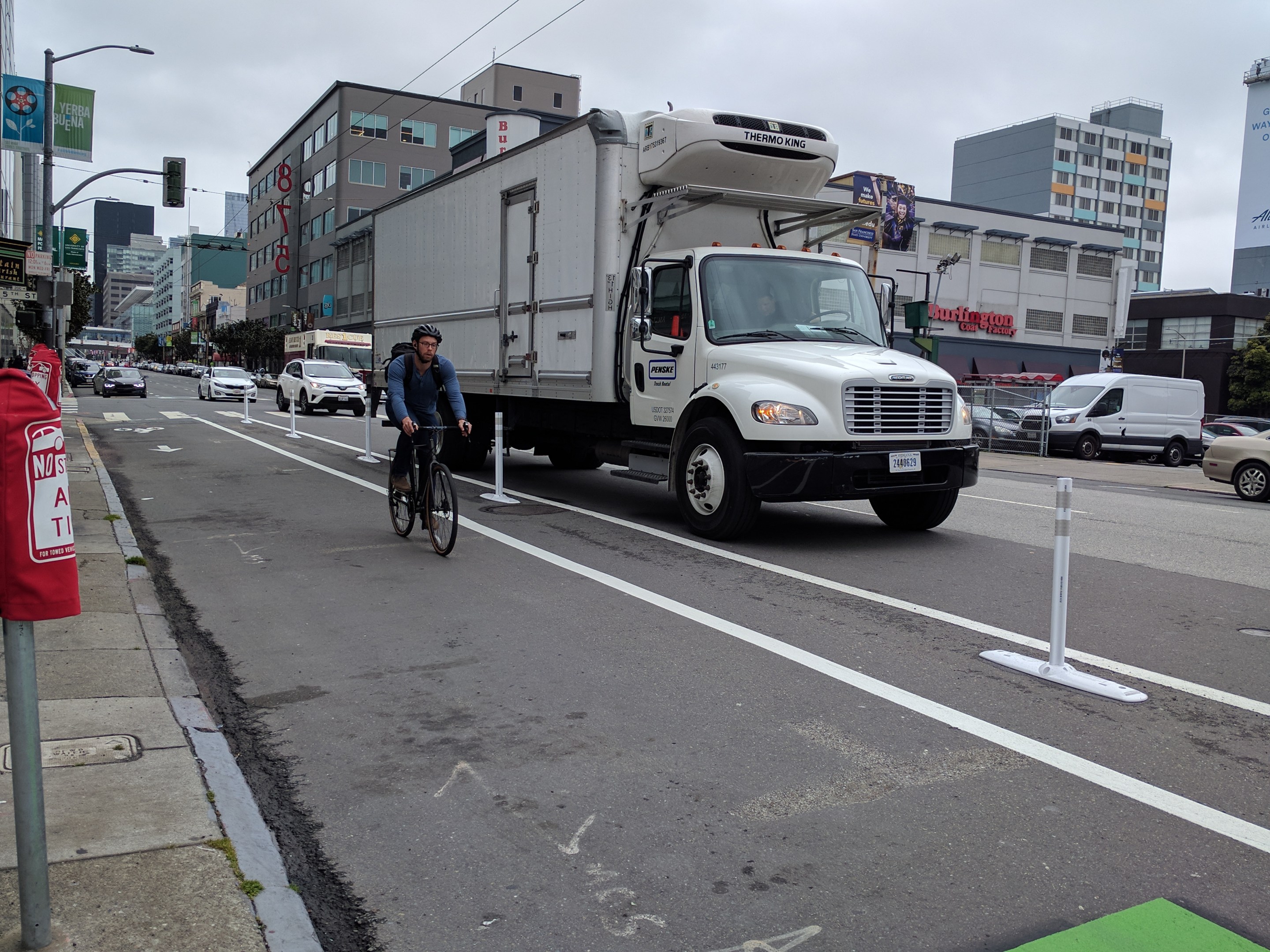Note: GJEL Accident Attorneys regularly sponsors coverage on Streetsblog San Francisco and Streetsblog California. Unless noted in the story, GJEL Accident Attorneys is not consulted for the content or editorial direction of the sponsored content.
Just minutes before I sat down to write this, I had an all-too-familiar experience. As I approached the intersection near my apartment, a huge box truck came barreling down the narrow residential road.
The speed the truck was going was far too fast, and my heart raced even as I stood back from the intersection. When the truck careened around the corner and drove away, I tried to see what company it was. But it was unmarked, and certainly didn’t have anything like a “How’s my driving?” sticker with a phone number on the back.
Welcome to 2019, where an unprecedented number of delivery and service trucks drive throughout our City – and not always with safety in mind.
At Walk San Francisco, we’re increasingly concerned about the role of trucks in severe and fatal traffic crashes.
The tragic and horrific pedestrian death in the Tenderloin on July 18 involved a large commercial big rig. Galina Alterman was hit and killed while crossing at Divisadero and Sutter on May 1 by a driver in a service truck. Tess Rothstein was crushed under a box truck while riding her bike on March 8 at Howard and 6th. In late February, a man was hit at Howard and 1st and dragged under a box truck (the victim survived).
Trucks are especially deadly for people walking and biking for several reasons. Of course, there’s the sheer size of trucks and the poor visibility this creates for truck drivers. Because large trucks have a high wheel clearance, they can drag a victim (as happened last week). The higher front end on trucks also make crashes more severe because of the part of the body they make contact with.
That’s why we’re urging the City to specifically address the role of service and delivery vehicles in the safety of our streets in new and more aggressive ways.
This can start with requiring service and delivery vehicles to display a way to report dangerous driving easily. New York City will soon require city vehicles over 10,000 pounds and private garbage trucks to have side guards. San Francisco should pursue this for all companies that have contracts with the City, plus rethink which streets should allow very large freight vehicles in the first place. We need to be able to see the data on severe and fatal traffic crashes involving trucks, too, to better understand and address these trends.
The City’s commitment to end severe and fatal crashes is an essential one, and reaching Vision Zero will require a huge suite of strategies. At Walk San Francisco, we think that taking a hard look at trucks must be part of this.
Marta Lindsey is Communications Manager for Walk San Francisco.





